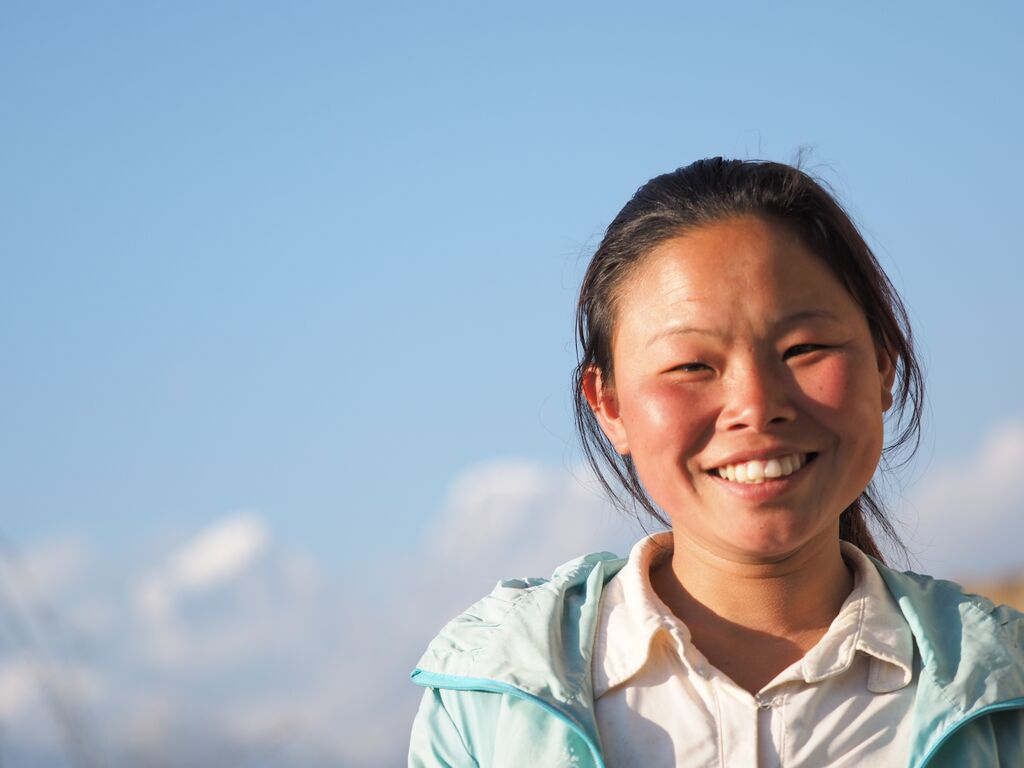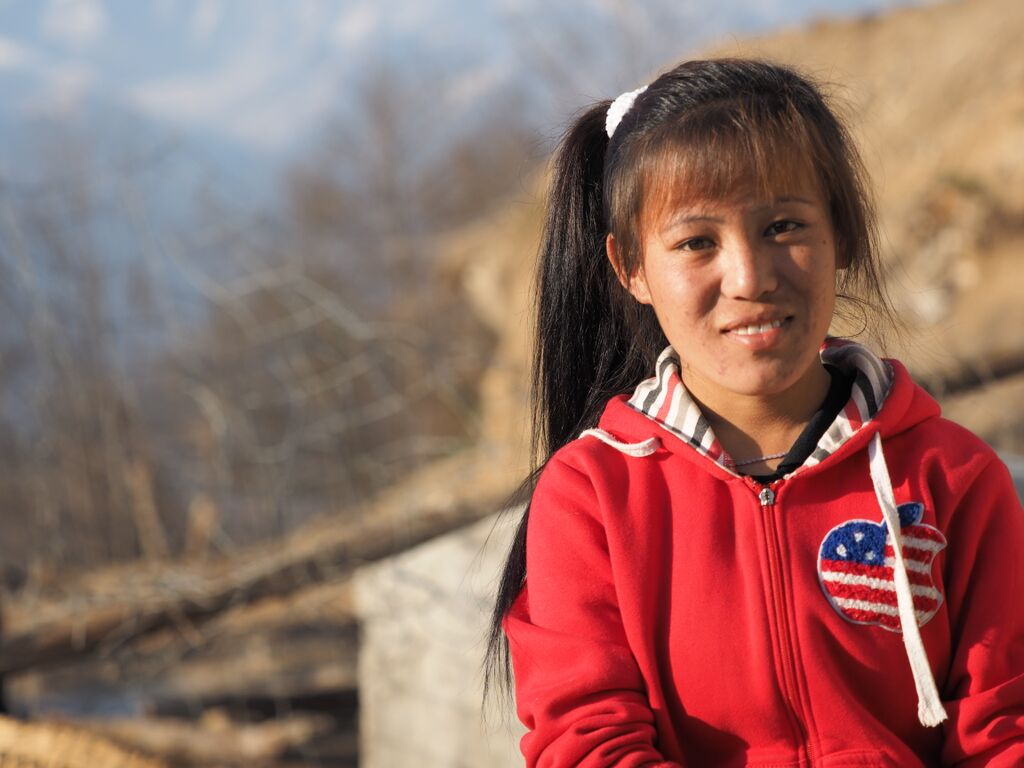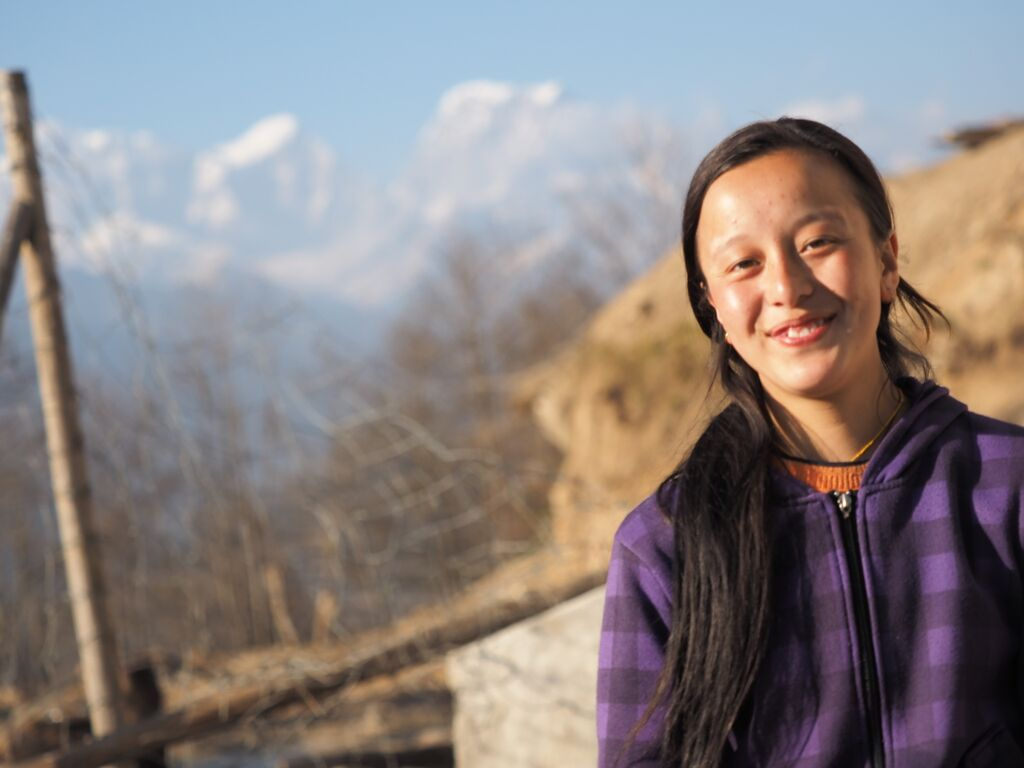Into the Himalayas
As a child, David Wood loved mountain climbing and dreamed of one day scaling the mighty peaks of the Himalayas. When he was 17, Wood – who was born on the Canadian prairies and raised in Washington state – made a list of 100 things he wanted to accomplish and experience in his life.
“Climbing Mount Everest was high on the list,” he recalled, “along with space travel.”
Although Wood finally made it to Nepal at age 46, what he ended up doing was even more inspirational than ascending Everest. For 13 years, he’s worked hard to ensure rural Nepali girls have the financial wherewithal to make it to advanced education.
To date, Wood and the non-profit he co-founded, Kina Social Ventures, have helped over 200 girls stay in school and provide young women with skills-based training through empowerment programs.
Now, six months after two earthquakes ripped Nepal apart, most of the schools in the region in which Kina.org operates were either severely damaged or outright destroyed. Wood wants to build four schools to replace the temporary tin and bamboo structures the kids currently study in. He needs to raise $80,000 to do that – and he’s running out of time.
Please support Kina’s online fundraising campaign with a donation here and help get kids in Himalayan villages back to school.
Wood says the temporary centres gave the children a covered space where they could continue their education.
“During this time, Kina decided to try to raise the funds to build four permanent schools to get us through this hump, and then we’ll refocus back on what we do, which is providing educational support directly to girls,” Wood said.

Kina describes schools as the bedrock of the small communities, and says rebuilding them marks the first step to restoring stability in the villages. The schools are not only places of learning, but serve as common areas to the village, bringing together families, neighbors and friends.
“It’s like anywhere— if the kids don’t have schools, the kids can’t go to school, can’t get an education and the earthquake changed everything," Wood said. "The schools in these rural areas are pretty basic.”
The ground moved
Wood’s stepson, Eli Krag, a student at the University of Victoria, is running a crowdfunding campaign this month to raise money to rebuild four schools destroyed by the earthquake.
He first visited Nepal at a young age and fell in love with the rugged country and its communities. After the first earthquake in April, Krag traveled back to Nepal to assist with aid efforts.
He found himself caught in the wake of the second quake in May, where he witnessed first-hand the spirit and resilience of the Nepalis. He was inspired to help, and came back to Vancouver to work on sending more help to remote villages.
Tanya Peachey is the CEO of a Vancouver technology company and a sponsor of Kina’s work. She believes that in the aftermath of the earthquakes having the children return to school will help them with their emotional recovery.
“Kids need to be in school. They need to be learning and they need to have some sort of normalcy that I think school can provide – especially when you’re recovering from a devastating event,” Peachey said.
“So, I think it’s really important what he’s doing to get schools built and kids back to school, so they can return to a normal life and help their community.”

The fund-raising for the four schools is just the most recent of Kina’s activities in Nepal. In the remote, rural villages, girls in Nepal’s education system generally don’t always progress past fifth grade in school.
Typically, girls drop out because parents can’t afford to pay for the extra costs to keep them in school, uniform and supplies.
If it comes down to a boy or a girl in a family, the boy is sent to complete his education, while the girls work in the fields or at home. It is not uncommon for young women to be married off at age 14 or 15.
Recognizing this, Wood and set up Kina.org to provide girls with an education in several villages in eastern Nepal. A Nepali program coordinator works with other groups to identify girls who are at risk of dropping out of school. They might be orphans, from a single parent family or be in high-risk situations—such as on the verge of being sold to the thriving sex trade industry if they leave school.
Girls who qualify have completed grade three or higher and lack the finances to continue their education. Kina only brings on a new student when its confirmed that the non-profit has the financial sponsorship for the duration of the girl’s education, which can run from two to 10 years.

The organization subsidizes the cost of tuition and living expenses while the girls complete their education, and provides advanced healthcare support. A college program was established five years ago to provide girls with easy access to advanced education outside their home village.
Once a girl finishes her advanced education, Kina will offer a bridging employment salary for up to two years.
To date, Kina has supported over 200 girls through the program. Wood said 10 years ago the girls wondered if they could even dream of finishing Grade 10. Now he hears statements from them saying they want to go to college or university, or start their own business.
A fork in the road
Ashish Gurung is a board member with Kina. He said while education in school is the objective of the program, Kina helps the girls in many other ways.
“It’s their confidence, their health, their safety. The way I feel about it is we really take care of the girls in our program. We’re kind of guardian angels, almost.
“When we say we help keep girls in schools, that’s what we’re doing, but we do so much more than that.”
It’s impossible to underestimate the impact of Kina on the girls. When Kina was still a fledgling organization, it ran leadership workshops. During one of the workshops, a young girl who was a laborer could see them going on. Her work was carrying rocks back and forth for buildings and every day she’d edge a little closer to the workshop.
Finally, she joined the workshop and then the program, returning to school. A few years later she vanished. It turned out she’d gone for a job in Western Nepal with an elderly Tibetan woman.
The woman was actually trafficking girls into India. Just before she was to board the India-bound bus, the girl slipped away and called Kina’s program director, who in turn contacted another group who rescued her.
The girl returned to school and completed grade nine. She got a job in Nepal’s capital, Katmandu, met a man who became her husband and has a family with him— on her own terms.

“This is really, really important to me,” Wood said. “The more I do it, the more important it is, even though things are changing. Things have changed radically. Even the gender bias is starting to abate a bit, even though it’s still a huge problem.
“When I see my two young girls, I see how much they have, the opportunity they have and want to build. Other girls, just because of birthright or luck of the draw, don’t have that same opportunity. So what we do, however small it is, is just to keep these girls in school, and give them medical support when they need it.”

The love affair begins
Wood, 61, was born in Winnipeg, Manitoba, but raised in Seattle, Washington in what he describes as "a very middle-class existence." When he entered Grade 12, the family moved back to Winnipeg, but by then the West Coast was in Wood’s blood. The next year he left for Vancouver.
In Vancouver he entered a two-year technical school, studying engineering. Although he obtained work with an engineering firm after finishing the program, he realized without a professional engineering degree he wouldn’t get very far in the business.
Wood returned to school, this time to the University of Calgary. It was around this time personal computers were beginning to arrive on the scene and, in the spirit of the times, the university offered a degree in electrical and computer engineering.
Wood shifted his focus and went wholeheartedly into information technology. After working for corporations for a while, he started a technology consulting firm in 1990. Ten years later Wood sold the company and decided he wanted some time off to do something more meaningful than just make money.

The decision to devote himself to volunteer work started a new decade for Wood. “My previous work wasn’t creating social capital, or having an impact on people. Even though we donated, gave to charities, it wasn’t engaging.
“I realized at this point I really wanted to do something closer to the ground.”
Wood loved traveling and he wanted to experience somewhere new. As a child he’d been a mountain climber and one of his aspirations was to scale Everest. Naturally, Nepal beckoned.
“That’s where I decided to go,” Wood said. “I fell in love with the place. The people are amazing. Culturally, it was exotic, powerful.”

Wood arrived in Asia in 2001 to do a four-month volunteer stint teaching at a rural primary school in the Himalayas in Eastern Nepal. He lived in a mountain community with a local Sherpa family and taught English to grades one through five.
“It was the hardest job I’ve actually ever had,” Wood recalled. “Very, very difficult, standing in front of a class of 30 kids, five times a day, six days a week. It gave me a whole new appreciation as to what it is to be a teacher anywhere.”
Join the journey
By this time, it was the early 2000s and Wood was staying in Nepal four months at a time building Kina and helping other grassroots non-profits organize. When he first began, Wood said the goals were modest: to try to have 25 girls they would support through their complete educational arc.
But over the last few years Kina has grown to the point where it now handles about 100 active girls. And thanks to technology such as Skype, Wood no longer has to be on the ground in Nepal for long periods, but can run a lot of the group’s business from Vancouver.
Kina’s partner group, The Small World, came up with a proposal to build a hostel where the girls would be safe while they attended a two-year college program away from their home village. Wood loved the idea as it solved a difficult problem of finding affordable housing for the girls attending college in the regional centre, and he ultimately decided to have Kina fund a third of the hostel.
In 2011, the hostel became home to the first cycle of 40 girls, with Kina providing scholarships to all of them. Now the hostel is hosting its third round of 40 girls all supported by Kina scholarships. “It’s been really successful,” says Wood.

Back in Vancouver, Peachey said one of the reasons they sponsor Kina is they know the money is going to individuals and not to a lot of corporate overhead. “And the idea of being a little bit more personal, knowing that we’re helping 40 named girls instead of just giving our money into a huge pool makes it a bit more engaging and personal for us and our employees.”
Peachey also believes strongly that helping educate people, particularly women, helps the community. “It’s not just women you’re helping. You’re helping the communities by having a broader group of people who can contribute to the local economy, bring money home for the family, all sorts of things.
“I think it’s been proven that it benefits everyone when girls and women are able to continue educating themselves.”
Wood said when he returns to Nepal every year he always tries to meet with a few of the girls to hear from them first-hand how they’re doing. The message is always the same: they love school and without the financial aid would unlikely be able to continue their education.
He’s often asked about data on the program: how may girls in the program, how many graduates, drop-out rates and so forth. To address those questions, Kina has developed an online database to manage and monitor the girls’ progress, and will train the Kina leaders in Nepal how to use and maintain the system in 2016.
But ultimately Wood said those questions aren’t as meaningful to him as what he views as the real success of Kina: “Simply being able to keep a girl in school, moving forward on her educational arc, knowing that each and every day a girl stays in school helps her gain confidence and self-esteem.”
There is much that can be done to help empower girls, its just a matter of time and resources. Wood has new ideas planned for using mobile technology to support the educational aspirations of rural girls, but these development projects are on hold for now while Kina is focused on rebuilding the damaged schools so the girls have a safe place to learn.
Helping rural girls get ahead in life never showed up on young Wood’s list of 100 things he wanted to accomplish and experience in life, but out of all those 100 aspirations he set for himself it has no doubt been by far the most satisfying and rewarding.
Please make a donation now so Kina can afford to build 4 schools. Thank you!

